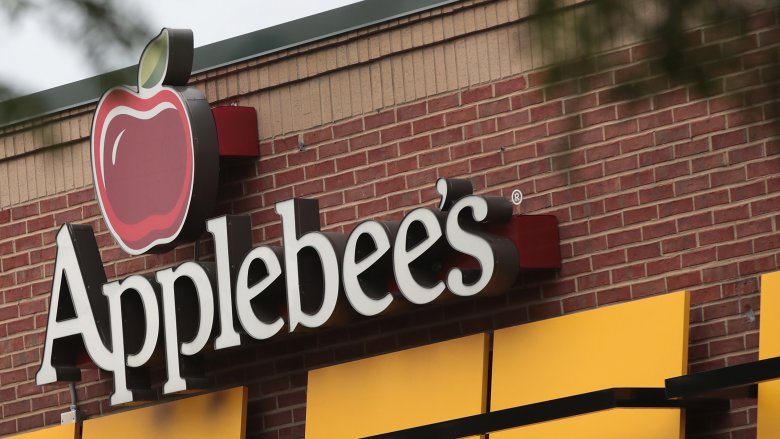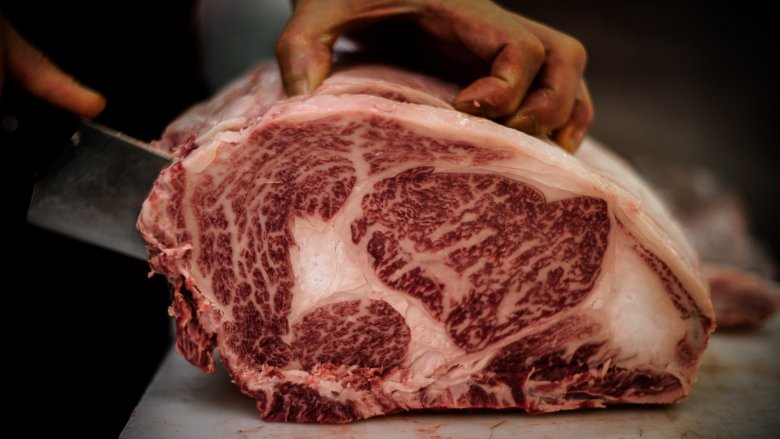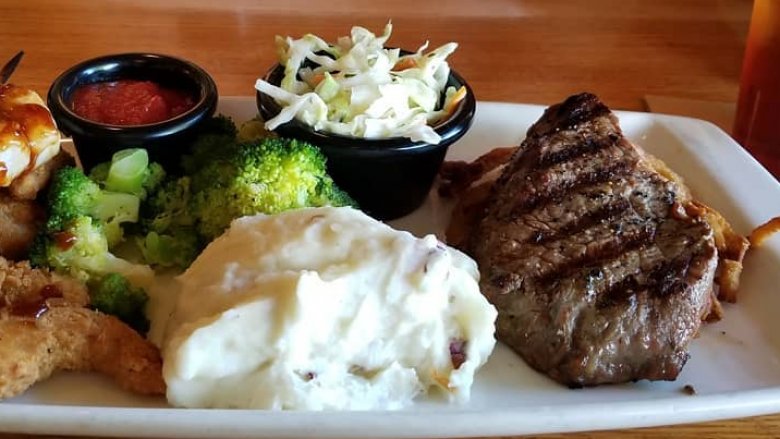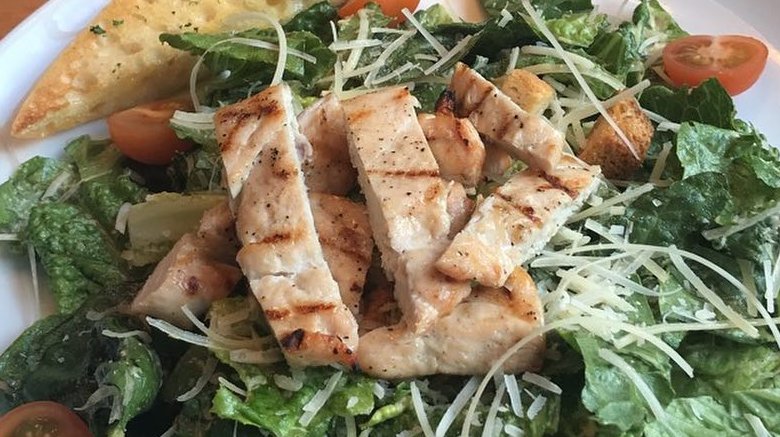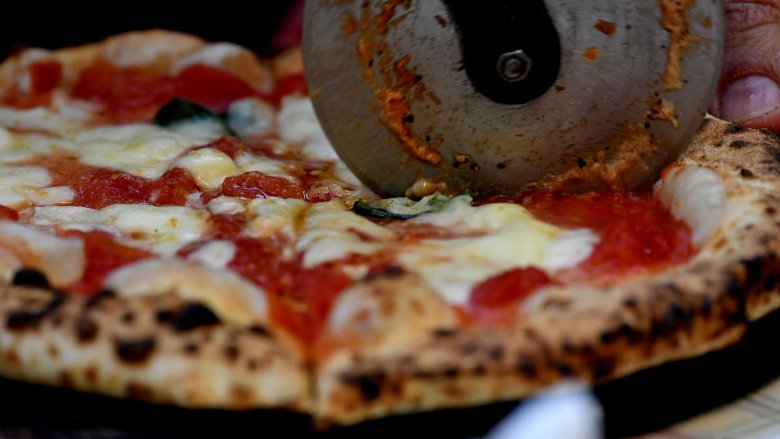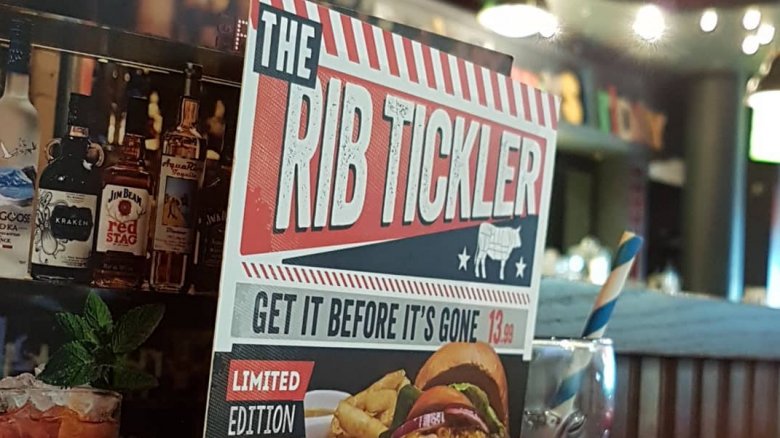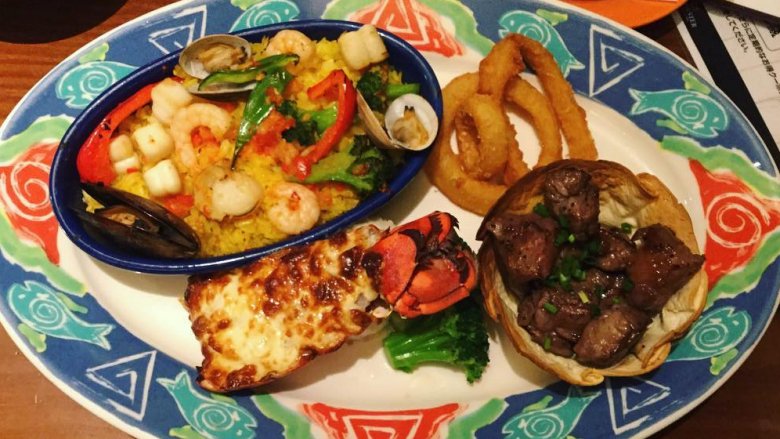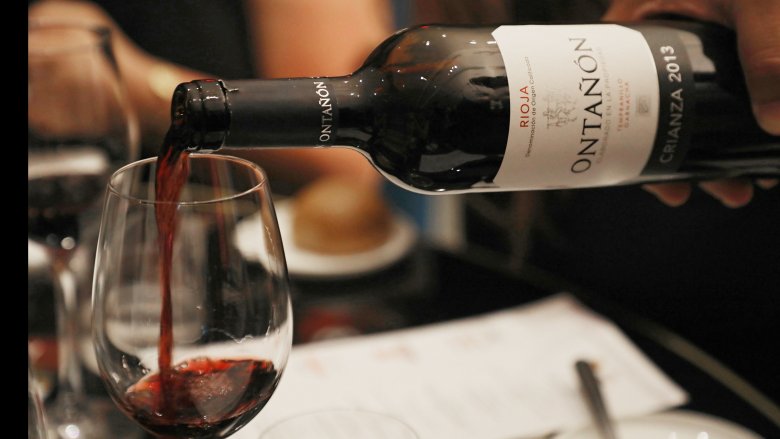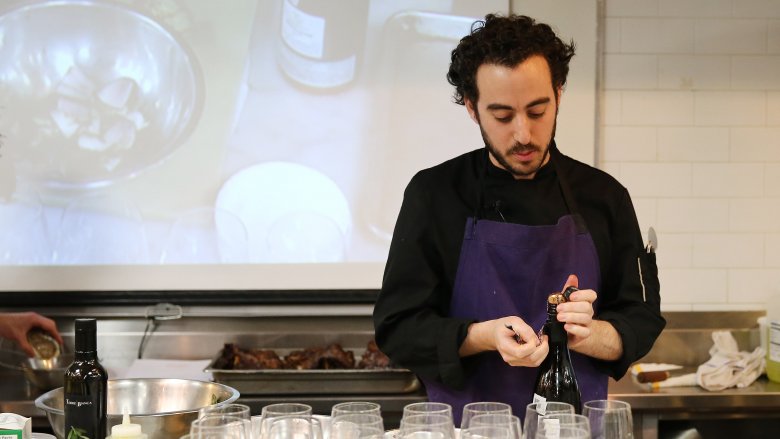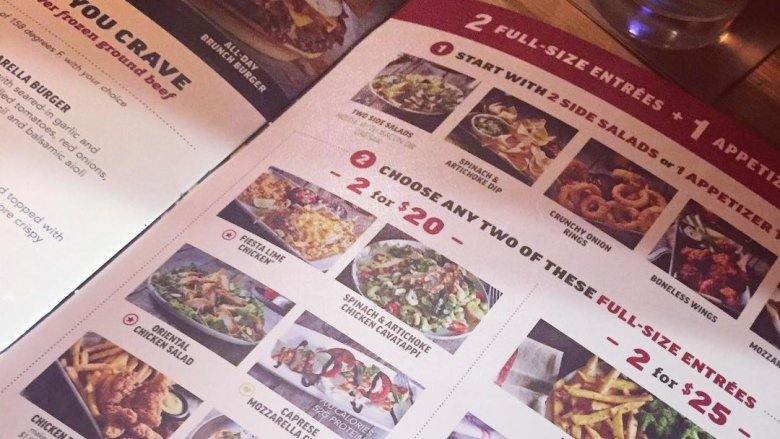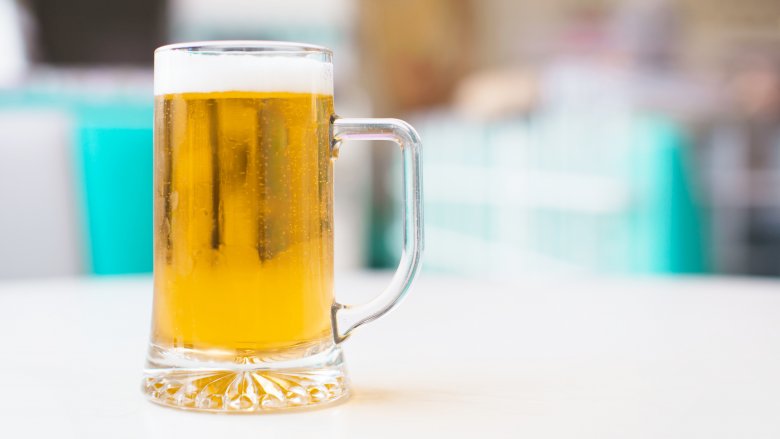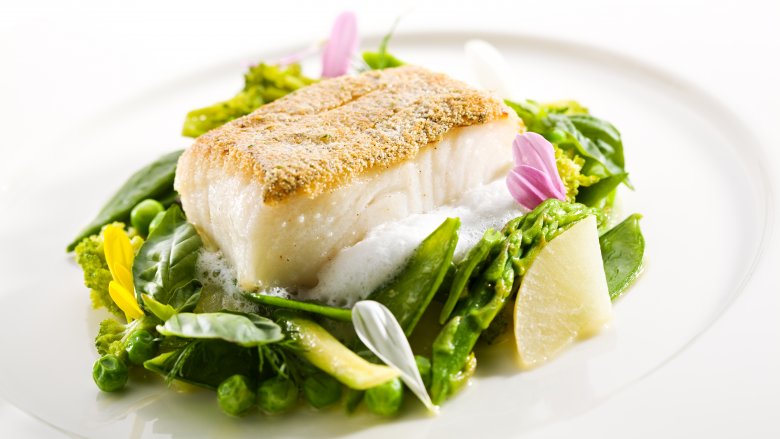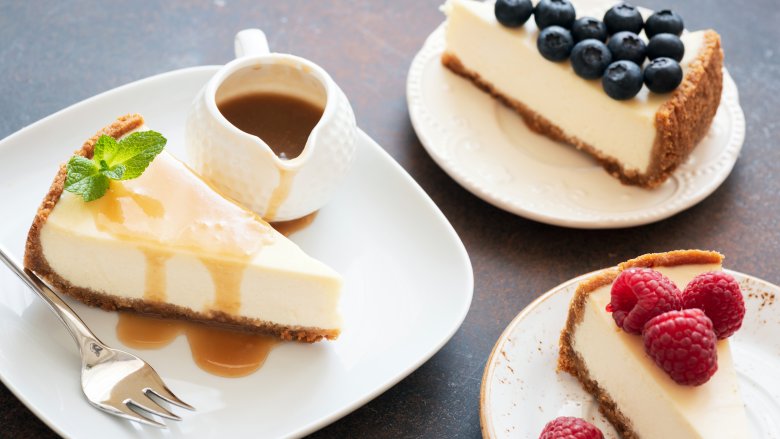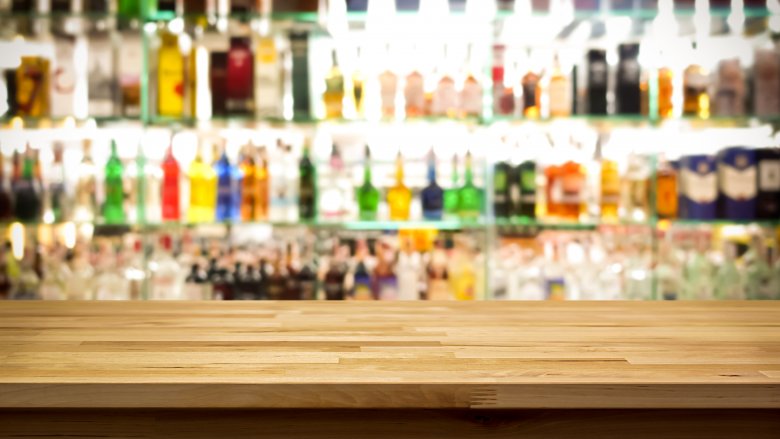Sneaky Ways Chain Restaurants Are Scamming You
Chain restaurants claim to be family-friendly and a step-up from fast food joints in terms of quality, but places like Red Lobster, Chili's, and even The Cheesecake Factory hold some pretty deep, dark secrets. What appears to be a good deal on a meal may actually be subpar service once you find out how its prepared, or realize the math involved in the meal markup, thinning out your wallet while padding the restaurant's pocket. Business is business in the fast casual world, but that doesn't mean you need to subject yourself to their borderline sketchy ways.
What's really going on behind the scenes at Applebee's? Is that T.G.I. Friday's special really that special? The last thing you want to experience during an evening out is a scam. Educating yourself on the motives of chain restaurants, and their profit margins, is a step closer to saving cash and feeling good about what you're eating. Here are some sneaky ways chain restaurants commonly scam their customers.
That Kobe beef probably isn't
Steak lovers go crazy for Kobe beef, which is considered to be one of the finest kinds of beef in the entire world. It's prized for its marbling, which gives the meat a tender consistency and rich flavor. This kind of meat originates in Japan, and cattle farms take incredible pride in the care and development of their cuts. These cows are practically treated like royalty, according to the Wagyu International website. "Fresh water is crucial so always provided. Exercise is not encouraged ... In the hottest months Sake beer is fed to stimulate appetite." Cows are also brushed and massaged daily at some farms.
Such carefully cared-for cattle is worthy of a high price point. And Kobe beef is so highly regulated that it's incredibly difficult to find outside of Japan — which is why you won't find it on most chain restaurant menus. If you do spot it somewhere on the list, you know it's probably inaccurate. As of March 2018, only nine restaurants in the United States sell true Kobe beef, according to Food & Wine. That means you can only try it at a handle of fancy restaurants in New York City, California, Texas, Nevada, and Hawaii. If you're at a chain restaurant, steer clear of anything labeled "Kobe steak" or "Kobe beef style" — and definitely don't bother with any Kobe beef burgers or sliders. It's a pretty good bet that's not what it is.
Your steak is microwaved
"How do you want your steak prepared?" is a question most servers will ask when a customer orders any number of steak options from the menu. Be it medium, medium-rare, or otherwise, most meat lovers are fierce about their preference. But what if your server asks how "pink" you want your steak to be? In a Reddit forum about restaurant secrets, a person who claimed to work at Applebee's said that "whenever someone wanted to order a 'medium rare' steak, and I had to say we only make them 'pink' or 'no pink.' That's because most of the kitchen is a row of microwaves ... Pink or no pink only referred to how microwaved to death you want your meat."
Not all restaurants are into the idea of microwaving meat. In a separate Reddit thread, specifically about whether or not Applebee's microwaves all of its food (the jury is still out on that one), an alleged restaurant employee raised a poignant question: "They don't microwave steaks or pull any fast ones...Did we ever use the microwave to bring a steak from medium to medium well... sometimes ... 20 seconds in the microwave after it's been grilled is not detrimental to the steak." So the next time someone asks how you'd like your steak done, maybe reply, "Not in the microwave."
Those grill marks are fake
Grilled food isn't just for summertime — but unless you're the one doing the cooking, are you sure your grilled chicken breast is actually made on a grill? Fake grill marks are definitely a thing, one giving your stomach a false sense of barbecued perfection. For one thing, your food is arriving at the restaurant already char-marked. In an article for Fast Company, Greg Spotts' research found that, "rather than install expensive equipment and pay for a dedicated chef, most chains outsource the cooking to giant processors such as Tyson, Pilgrim's Pride, and Keystone Foods."
What goes on at these processing plants? In short, meats like chicken breast are submerged in a "tumble marinator," and are then baked with jets of hot air, The New Food Economy found. This seals in flavor and makes the meat plump, which makes it easier to brand it with grill marks. Food like this then gets shipped all across the country and lands on your plate. If you're lucky, it will have been flat-top grilled, a method that many restaurants use to heat up food in place of the real deal. According to Schweid and Sons, "The flat top grill allows for the outcome of cooked burgers to be even, whereas the outcome of cooking burgers on a charcoal grill is uneven." Still not grilled in the real sense, but better than nothing.
The markups are way more than you think
When was the last time you bought a box of pasta? Chances are, you spent less than $3 for a whole pound. So why would you pay double digits for a bowl of noodles that took less than 10 minutes to prepare? According to an article in the SF Chronicle, "Most restaurants sell their pasta dishes for six to 10 times more than cost." Add-ins like veggies, meat, or special sauces tend to increase that price as well.
If that doesn't have you reconsidering your trip to the Olive Garden, maybe the price of pizza will. According to an article on Pizza Today, pizzarias can make upwards of a 20 percent profit margin off the dough you spend to eat baked dough. And according to some charts created by Plate IQ, a meat-covered pizza might only cost "$1.90 to make, and generally sells for $14. That's a 636 percent markup. A plain margherita pizza, at a cost of $1.77, retails for $12 — a 580 percent markup." This plate profit extends to seafood as well, some of the priciest menu items. One chef made the point about oysters in an article for Thrillist, saying, "$36-$45 per dozen is absolutely outrageous for an ingredient that requires no culinary skill whatsoever."
The Daily Special wasn't created in-house
A Daily Special is supposed to be just that — a meal you likely won't get anywhere else, because it's "special" to the place you're dining. Many chefs take pride in the daily special, as a way to experiment with new flavors and see if customers are receptive to their ideas. But the chef in the kitchen at T.G.I. Friday's? They had no part in whatever specials might appear on your menu at a chain restaurant. In an article for The Huffington Post, Keith Ball, a food and wine consultant, mentions that "menus, recipes, and 'specials' are devised in the research and development kitchens at the corporation's headquarters. The recipes, which are sometimes more aptly called formulas, are utterly specific, including details such as exact cut and weight of all proteins, vegetables, and starches."
It makes sense, when you think about it. Chain restaurants are spread wide across the United States, so whatever meals they make have to be uniform and precise enough that a location in Philadelphia can make it just as good as a location in Houston. Ball states that many of these places have kitchen managers, not chefs from culinary schools, who take on more administrative roles and tasks. "Very little — if anything — is left to personal creativity at the unit level," he adds. Your meal might still taste delicious, but knowing it was formulated in a strict, corporate way might leave a bad taste in your mouth.
It also might not be that special
A good chef will create a daily special that is actually special, because it uses seasonal ingredients that aren't found all year long. According to a post on Chef Works, "when you offer seasonal specials for a limited time only, you create a sense of urgency for the customer to visit while the special items are still available ... It also urges customers to order something different and maybe even a little more than usual because the items in question might not be available the next time they visit." It's a great way to sample the flavors of the season, as served through the creative vision of the chef.
However, a lot of restaurants take advantage of the word "special," knowing how much the word appeals to customers. "Some restaurants put together their specials for the day based on what's about to expire or what they're trying to get rid of faster," says executive chef and owner Alberto Morreale of Farmer's Bottega, in an article for Reader's Digest. On top of not-so-fresh ingredients, is an inflated price tag as well. Unless the restaurant you're at is known for its specials, steer clear of whatever items are listed as such.
That cheap bottle of wine probably has a high markup
A bottle of wine is certainly a convenient way to have a few drinks with your dinner. But buyer beware — the prices on that wine list aren't 100 percent reflective of the wine's quality. In an article for GQ, Alan Richman writes, "A willingness to pay a respectable amount for a bottle on a wine list is no guarantee that what you drink will be worth the price." That means that whatever deal you think you're getting on a bottle of wine at a chain restaurant, isn't honestly worth the cost.
To be fair, customers have engineered the wine profit system to their disadvantage. There's something called, "extremeness aversion," which Wired describes as people who "shy away from the most expensive item — or the least expensive, for that matter." It's why customers will often buy the second least-expensive wine on the menu, which probably has a high markup since the sommelier knows this mind trick. Wine by the glass might even cost more than the bottle it came from. According to Richman, "If you're paying $13 for a glass, wherever you are, the restaurant owner almost certainly paid less than that for the bottle."
And corking fees are purely for profit
A BYOB policy at a restaurant sounds appealing, especially if you prefer a certain kind of wine with your meal that the restaurant doesn't carry. While those policies allow you to bring the bottle into the restaurant, they still need to make a profit, so a corkage fee is often charged. According to an article on Restaurant Engine, "your restaurant might charge a corkage fee to help cover your service, lost revenue from not selling your own wine and the risks of patrons breaking your wine glasses." That's all fair and good, but it's how much a restaurant charges for this "service" which is scam-worthy.
The Restaurant Engine article lines out exactly how absurd corkage fees can be for customers. In New York City, for example, diners can expect to pay anywhere from $15.00 to $20.00 per bottle, sometimes up to $85.00 if you're in a more upscale location. If your bottle of wine was that amount, or less than that to begin with, you're basically paying double (if not more). It's fine to call a restaurant ahead of time and ask, but depending on the venue, a customer's best bet is to keep the bottle at home.
The menu design messes with your brain
Chain restaurants may be scamming you even before you order. There's an entire psychology behind how a restaurant designs its menu, and it's completely to get customers ordering lots of food, higher-priced food, and everything in between. Find yourself gravitating towards the upper right-hand corner? According to design product website Canva, that section is the "sweet spot," and is where most people look first when they are out to eat. "As a result, many restaurants place the menu item they want to sell most (often an expensive dish) in that location." Canva also states that menus will create elaborate "call-out" sections that visually draw your eye to them and make you focus on whatever it is they are trying to sell. "It could be a photo of the dish, a graphic or illustration, a colored or shaded box, a border, or some other attention-getter."
Aaron Allen and Associates, a global restaurant consulting firm, also provides some insight: "The colors on a menu can affect what we order. Green implies the food is fresh, and orange stimulates the appetite. Yellow is a happy hue and is used to catch the diner's attention. Red encourages action and is used to persuade us to buy the meals with the highest profit margins." Superlative claims and elaborate language are used in an attempt to make food sound better than it actually is. Check for these mind tricks next time you open a menu; stick to your budget, or what you're really craving, and you'll avoid spending too much.
That pint of beer might not really be a pint
When you're paying roughly the same amount for a pint of beer in a restaurant that you would for a six-pack from the grocery store, the last thing you want is to be shorted, even if it is just a couple ounces. But it turns out that the practice of serving beers in pint glasses that aren't quite 16 ounces is fairly common in the restaurant industry, and according to Crosscut, the false pint problem has gotten so out of hand that some states are considering laws to put a stop to the practice.
Though these smaller glasses may look like legitimate pint glasses, they are often thicker and heavier than a true pint, and all that extra glass means less room for beer. Bars say that this is to lessen the likelihood of breakage, but there's another benefit there, too — one Hooter's executive admitted, "We can get 20 more beers out of a keg" by using 14-ounce glasses.
One surefire way to know that you're getting each and every ounce for pay for? Opt for beers in cans and bottles instead.
The fish you ordered might not be the fish you get
If you're ordering fish when you go out to eat — whether a hot dish or sushi — you're probably not getting what you paid for.
A 2013 study by Oceano revealed that seafood fraud, the "illegal practice of substituting one seafood species for another," is rampant in the United States, with 38 percent of eateries serving mislabeled fish. Red snapper and tuna rank as the most commonly substituted species, at 87 and 59 percent, respectively, and shockingly, of the 120 samples of red snapper purchased nationwide, only seven were the real deal. Halibut, cod, Chilean seabass, and grouper are also high on the list, and even salmon was mislabeled seven percent of the time. Sushi restaurants didn't fare any better, with 74 percent serving mislabeled seafood, particularly tuna and red snapper.
Because it can be hard for a consumer to differentiate between the real thing and the fake when fish is cut up, cooked, or covered in sauce, it's easy to be duped. According to Eater, your best bet is to stick with restaurants that serve whole fish, or if you're ordering sushi, stay away from the rolls — it's easier to disguise a cheap substitute when it's encased in rice and avocado.
The cheesecake might be from Walmart
Thinking about springing for that fancy dessert to cap off your meal? It might not be the pastry chef-created delicacy you think it is.
In a revealing Reddit thread, chefs were asked to name the biggest ripoffs in their restaurants, and it turns out the slice of cheesecake you paid $8.99 for might have come from the supermarket. One Redditor explained, "Most of our desserts are purchased from the Walmart directly across the street then marked up 500%. For the price of a couple of pieces of cheesecake, you could just go across the street to Walmart after your meal and buy a whole one. We just drizzle a bit of chocolate or raspberry sauce on it so that it doesn't look exactly like the one from Walmart."
Another noted, "When we run out of cheesecake someone draws a straw to walk to the Publix across the street to buy more."
Of course, there's nothing wrong with these supermarket desserts — as one commenter noted, "Joke's on you, Publix bakery is the s**t" — but if you're expecting more bang for your buck, you might be disappointed.
The top shelf liquor might actually be bottom shelf
As if restaurants don't profit enough on cocktails, some might go a step further and switch out the good stuff for their cheaper "well" counterparts.
A 2013 investigation into 29 New Jersey bars and restaurants — dubbed "Operation Swill" — revealed this deception, aimed to "fool the customer and increase their profits," according to a statement by the New Jersey Division of Alcoholic Beverage Control. "The customer paid for the premium brand but was instead, unbeknownst to the customer, poured the non-premium brand." Fans of TGI Fridays will be disheartened to learn that the raid named 13 of the chain's locations in its findings, along with Ruby Tuesday and Applebee's.
So how do you avoid being scammed? It's not easy. ABC News spoke with Jon Taffer, bar owner and host of Spike TV's Bar Rescue, who said that because most people can't tell the difference between top shelf and the cheaper stuff, bartenders will take advantage of that. His tip: Order your booze straight up. "If you come and say 'Let me have a Johnnie Walker Black on the rocks,' I'm not going to mess with that. I'm giving you Johnnie Walker Black," he said. "If you come up to me and say 'Let me have a Grey Goose and orange juice,' that's the ticket to pour you the cheapest vodka I've ever had."
